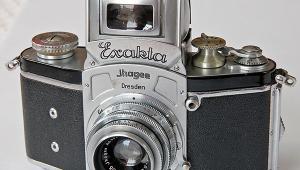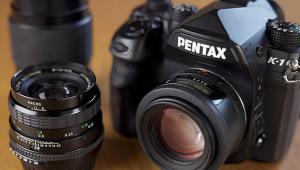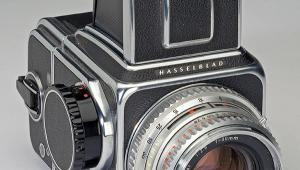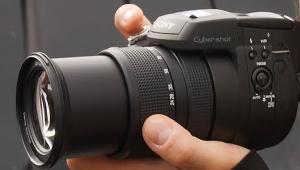Classic Cameras; An Odd Group Of 11; Back Of The Closet Accessories That Bring Back Past Times
It is very easy for collectors to get hung up on cameras and lenses, and to forget that photography is a lot more than this. Many small and not-so-small accessories are technically fascinating in their own right, and remind us how things used to be in an era less affluent but more diverse than our own. For the collector, or simply for those with an interest in the past, they have the twin advantages of being affordable and (in most cases) of taking up relatively little space. Some may even be useful!
Here are 11, chosen for their diversity and (mostly) low cost: I haven’t given current values, because these really are things that depend on who is selling and who is buying.
 |
|
|
Gitzo Pneumatic Delayed Action Release
Until the 1960s, few low-cost cameras had self-timers, and a variety of accessories were sold to remedy this. Many used “clockwork” escapement trains, but a few (like this very smart chrome-plated Gitzo) were pneumatic. You pull very hard on the release, against a spring and against air pressure, creating a partial vacuum in the main body of the unit. Slowly, air seeps back in and after 10-20 seconds the spring triumphs and fires the shutter. Allegedly, turning the knurled ring at the top of the cylinder regulates the delay, but it doesn’t seem to make much difference on mine.
 |
|
|
Johnson Yellow Grad Filter
Graduated filters appeared in the ’30s, as far as I am aware, but in order to save money—a recurrent theme with old accessories—they were often sold as unmounted glasses to be installed in holders or in combination lens shades/filter holders. This 30mm Johnson, guaranteed plane parallel to within 4 minutes of arc, cost me about 50 cents, years ago.
 |
|
|
EOS Exposure Meter
When Canon appropriated the name “EOS” I wondered if they knew they were not the first. This dinky little meter, just 25⁄8x2x1” (65x50x25mm), uses a selenium cell and is graduated in old (/10) DIN and Scheiner. It is probably between 60 and 70 years old. The needle just twitches enough to give a reading of around 1⁄30 at f/2 at 27/10 DIN (call it ASA 400).
 |
|
|
Fotogram Master Exposure Calculator
Meters were expensive, even as late as the ’60s, and very few cameras had them built-in, so “slide rule” calculators like this one from Concentric Indicator Laboratories were popular. It dates from the late ’40s or early ’50s and takes account of six variables: scene type (10 types, including “ravines,” plus subcategories such as “windows near” and “windows remote” in “bright interiors”); subject distance (six choices, from “far horizon” to “portrait or close study”); time of year (months in pairs, such as June-July or August-September); time of day (6am to 6pm, in one-hour rests); sky condition (eight options from “very dull” to “clear sun and white clouds, not obscuring sun”); and of course film speed (European Scheiner 16-34, English H&D 100-5000—about ASA 3-200, though this was before the ASA revision of ’59 which would have made it the equivalent of ISO 6-400).
 |
|
|
With sufficient experience, these calculators can be quite useful, though it is likely that you could learn to guess exposures as fast as you could learn to get reliable exposures from one of these things. What is more, a guess would allow you to take a picture immediately, instead of dialing in endless tiny numbers. The price—half a guinea, or about $1.50—was quite stiff for around 60 years ago.
 |
|
|
Flash Synchronizer
When flash bulbs became popular in the ’30s, few cameras were synchronized for them, and indeed, many cameras remained unsynchronized even into the ‘50s. Several firms therefore brought out accessories such as this one. The sync lead is connected to a slider to allow the flash to fire just after the shutter trips; the slider would be appropriately set (and locked in place with a knurled screw) with the aid of a small 6v bulb in an adapter in the flash gun. There’s no name on the unit, just “Patents Pending,” but it uses the PC nipple that is still current today.
 |
|
|
- Log in or register to post comments

















































